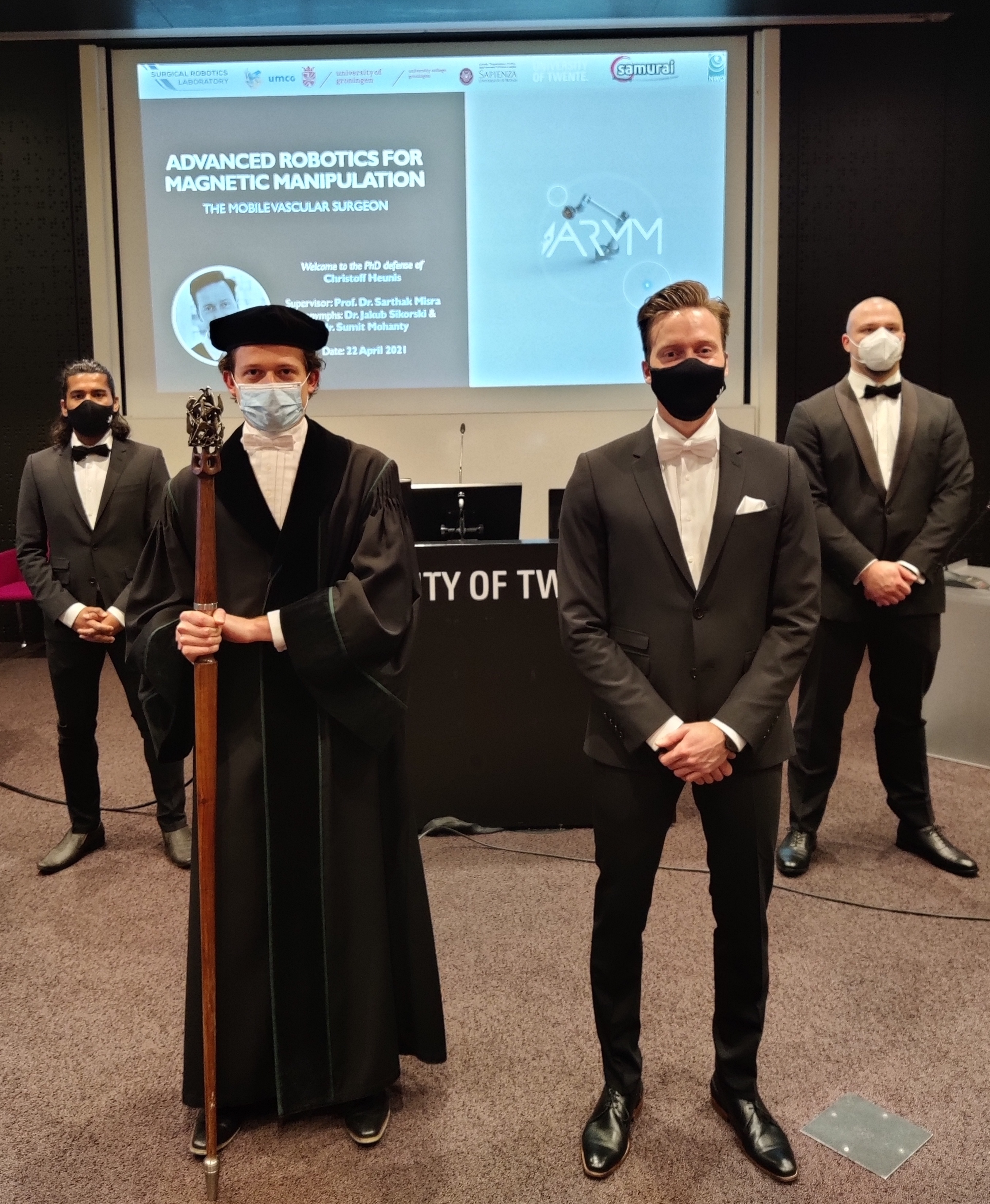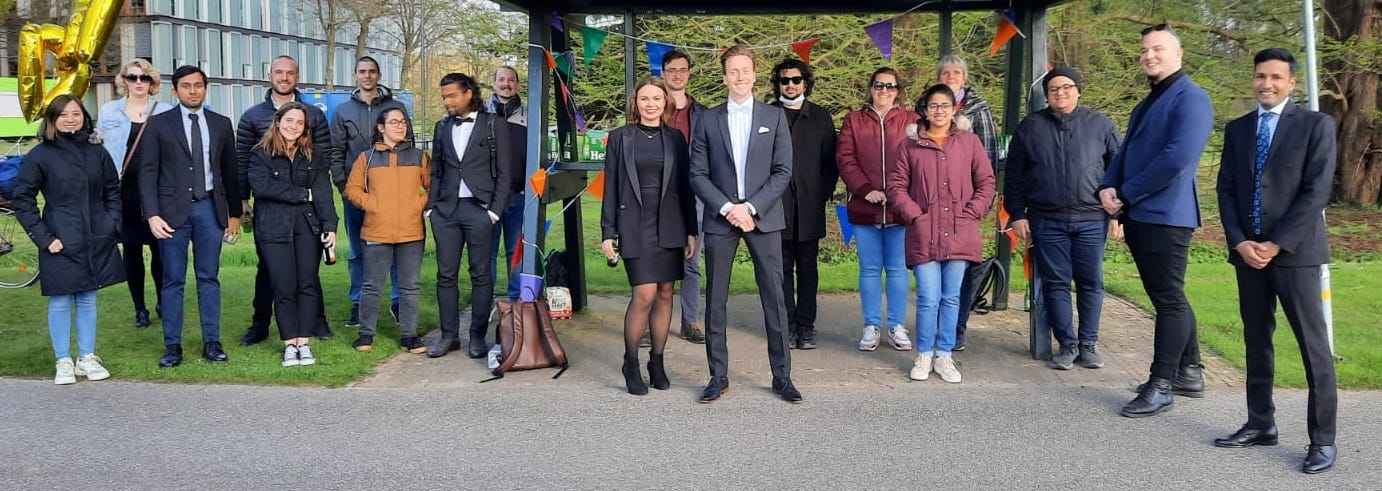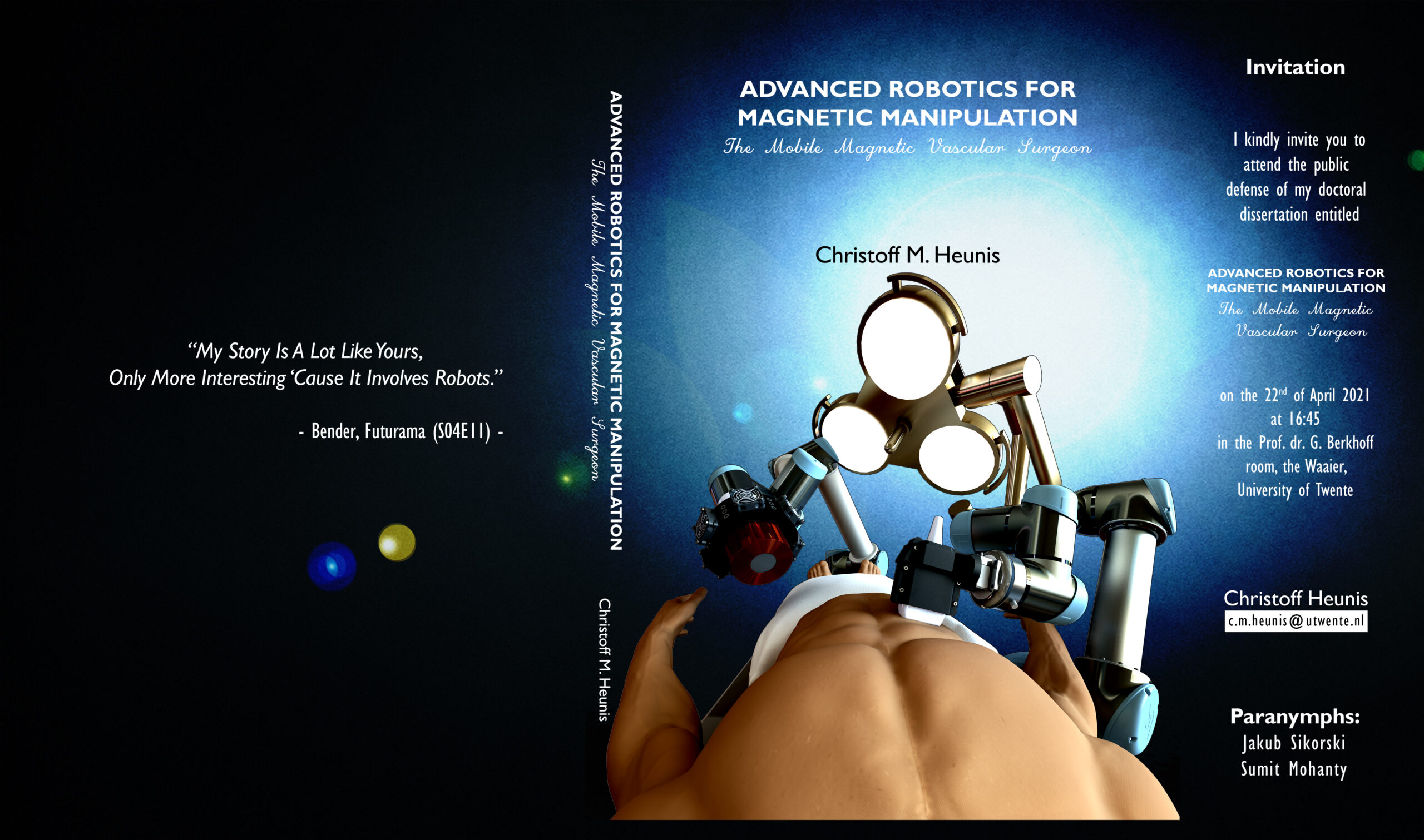
PhD Defense – Christoff M. Heunis
SRL doctoral candidate defended his thesis
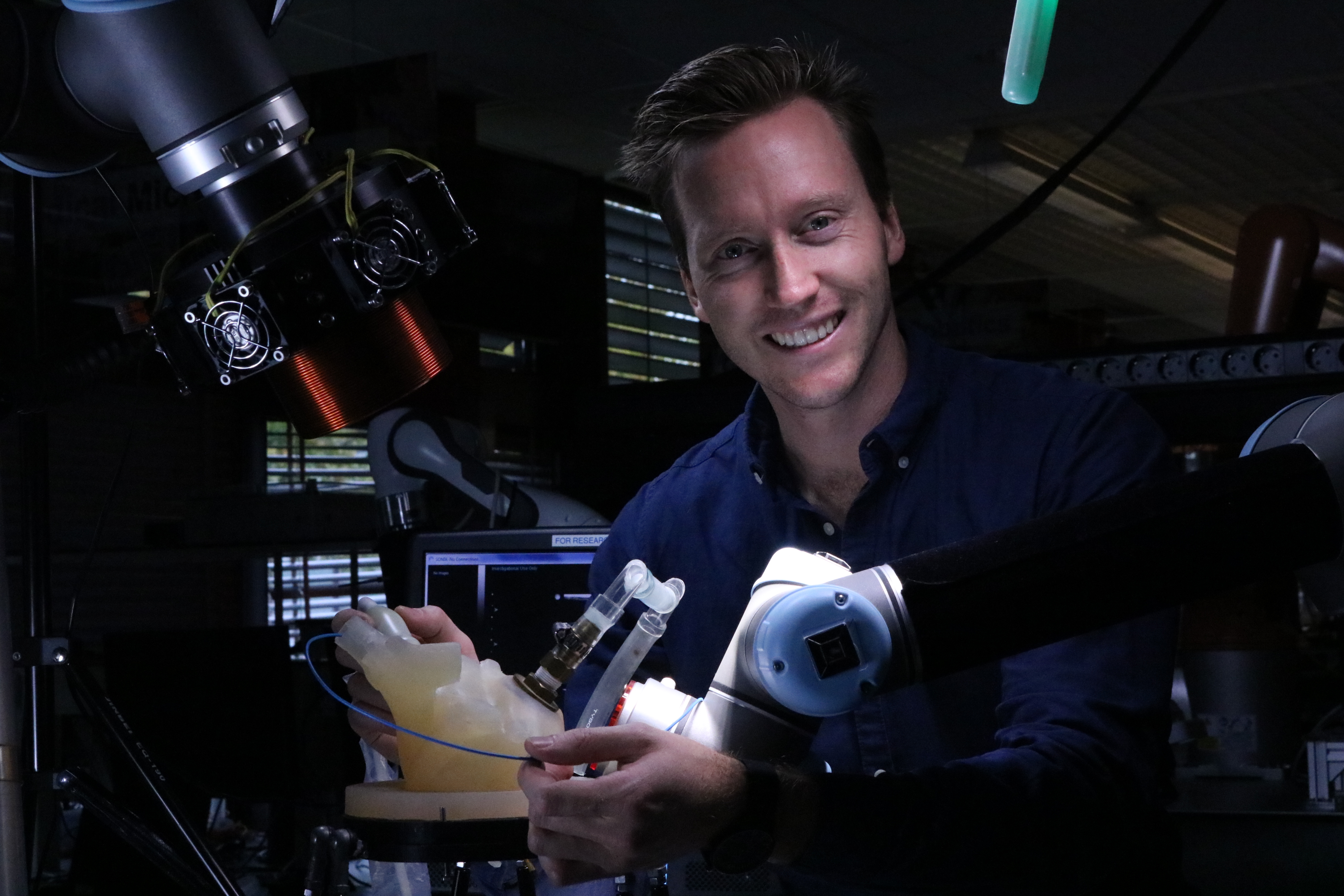 The defense of the doctoral thesis titled “Advanced Robotics for Magnetic Manipulation – The Mobile Magnetic Vascular Surgeon” by Christoff M. Heunis was held on Thursday, 22nd of April 2021 at 16:30 CET in the Prof. dr. G. Berkhoffzaal room, in the Waaier building at the University of Twente. Due to COVID-related audience restrictions, the defense was invite-only and is made available for the public online here.
The defense of the doctoral thesis titled “Advanced Robotics for Magnetic Manipulation – The Mobile Magnetic Vascular Surgeon” by Christoff M. Heunis was held on Thursday, 22nd of April 2021 at 16:30 CET in the Prof. dr. G. Berkhoffzaal room, in the Waaier building at the University of Twente. Due to COVID-related audience restrictions, the defense was invite-only and is made available for the public online here.
Christoff’s doctoral thesis will be available here.
Thesis summary:
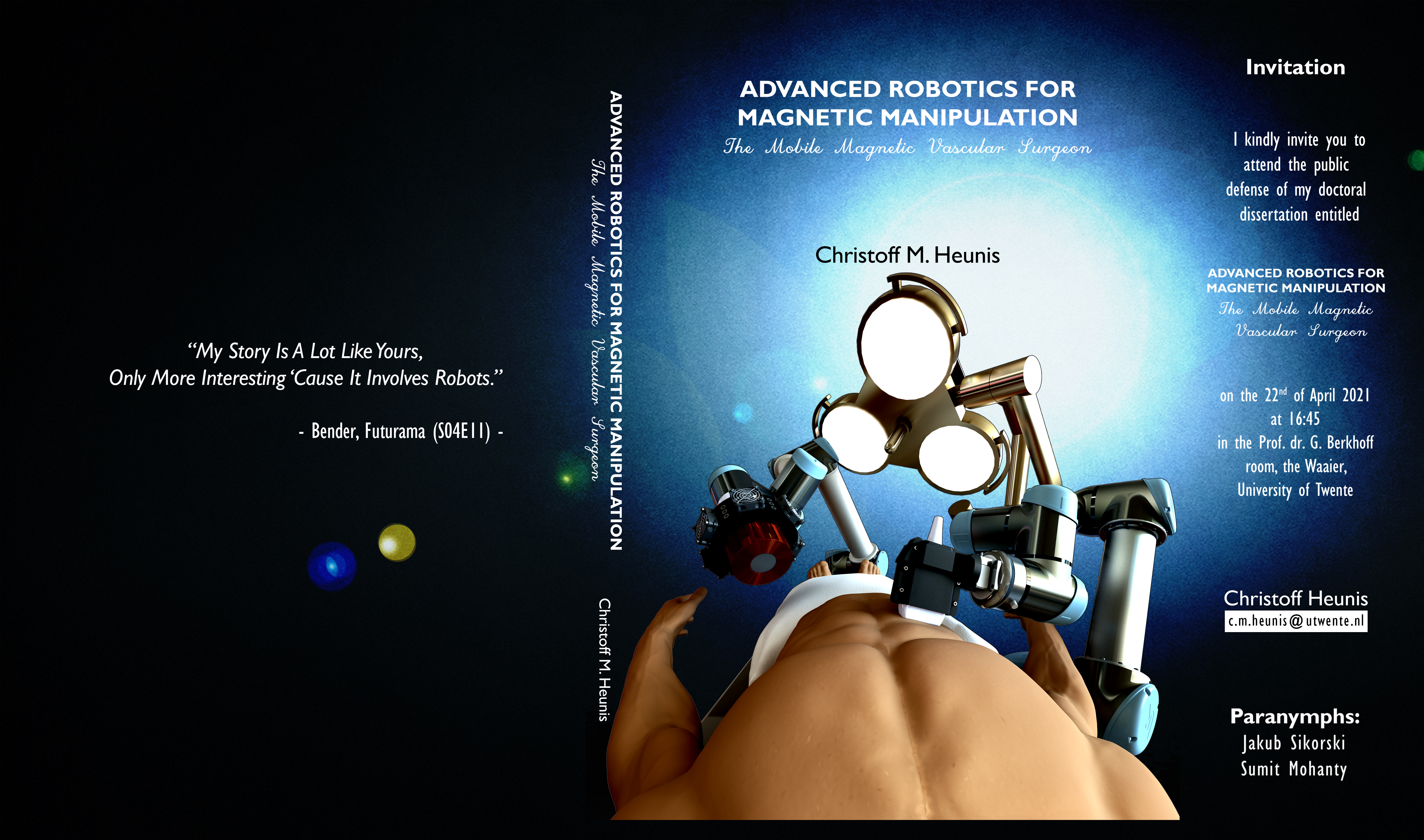 Traditionally, the success of a minimally-invasive surgical (MIS) procedure is dependent on the capabilities of the clinician. Prominent MIS procedures include vascular surgeries, during which catheters are inserted into the body, steered to a target location, and used to treat a vascular disease. A challenge in vascular surgeries is the accurate positioning of catheters in particular. Without the use of X-ray fluoroscopy, no real-time feedback of where the catheter resides in the body is possible. Generally, clinicians may opt to employ robotic systems to assist them during catheterizations. Such systems could potentially improve catheter tip control, though have not explicitly advanced the sensing or tracking of catheters. Robotic systems can also be extended to utilize serial-link robots that are designed to play essential roles in reducing the physical burden of a clinician. Thus far, few commercial serial-link surgical robots exist, as they are either expensive or offer no added value. For this reason, clinicians still mostly opt for the manual steering of catheters and visualizing them using X-ray fluoroscopy. This decision causes increased levels of ionizing radiation exposure, coupled by the loss of natural hand-eye coordination of clinicians, and reduced levels of dexterity regarding the manipulation of catheters. To alleviate this problem, methods of wireless actuation can be integrated with serial-link robots with advanced controllability that are of more value than current actuation systems
Traditionally, the success of a minimally-invasive surgical (MIS) procedure is dependent on the capabilities of the clinician. Prominent MIS procedures include vascular surgeries, during which catheters are inserted into the body, steered to a target location, and used to treat a vascular disease. A challenge in vascular surgeries is the accurate positioning of catheters in particular. Without the use of X-ray fluoroscopy, no real-time feedback of where the catheter resides in the body is possible. Generally, clinicians may opt to employ robotic systems to assist them during catheterizations. Such systems could potentially improve catheter tip control, though have not explicitly advanced the sensing or tracking of catheters. Robotic systems can also be extended to utilize serial-link robots that are designed to play essential roles in reducing the physical burden of a clinician. Thus far, few commercial serial-link surgical robots exist, as they are either expensive or offer no added value. For this reason, clinicians still mostly opt for the manual steering of catheters and visualizing them using X-ray fluoroscopy. This decision causes increased levels of ionizing radiation exposure, coupled by the loss of natural hand-eye coordination of clinicians, and reduced levels of dexterity regarding the manipulation of catheters. To alleviate this problem, methods of wireless actuation can be integrated with serial-link robots with advanced controllability that are of more value than current actuation systems
This dissertation aims to advance state-of-the-art catheterizations by integrating magnetic actuation and ultrasound imaging with collaborative robots. Such robots are intended for direct human-robot interaction in a shared space such as an operating room. The magnetic actuation of surgical instruments has already been an adopted approach that has shown potential for diagnostic and therapeutic purposes. This approach is expanded by investigating whether such integration with surgical robots is clinically feasible and whether clinicians would eventually utilize such systems in the operating room. Therefore, the benefits, challenges, and future implications of a novel clinical platform based on robotics and magnetic actuation principles are discussed. Chapter 1commences this dissertation with an overview of magnetic actuation techniques employed in MIS, focusing on endovascular and cardiac surgeries.
In Part I, the standard design requirements of, and clinical approaches towards, magnetic actuation systems and magnetic catheters are discussed. Chapter 2 includes an extensive literature review on the state-of-the-art commercial and experimental magnetic actuation systems. In particular, the benefits and drawbacks of these systems regarding catheter-based interventions are investigated. In light of this investigation, the design of a novel magnetic actuation system is described. Thus, in Chapter 3, the Advanced Robotics for Magnetic Manipulation (ARMM) system is introduced. It employs a single mobile electromagnet located on a robot, allowing for the magnetic steering of catheters in a clinically-relevant workspace that is much more extensive than those of existing commercial systems.
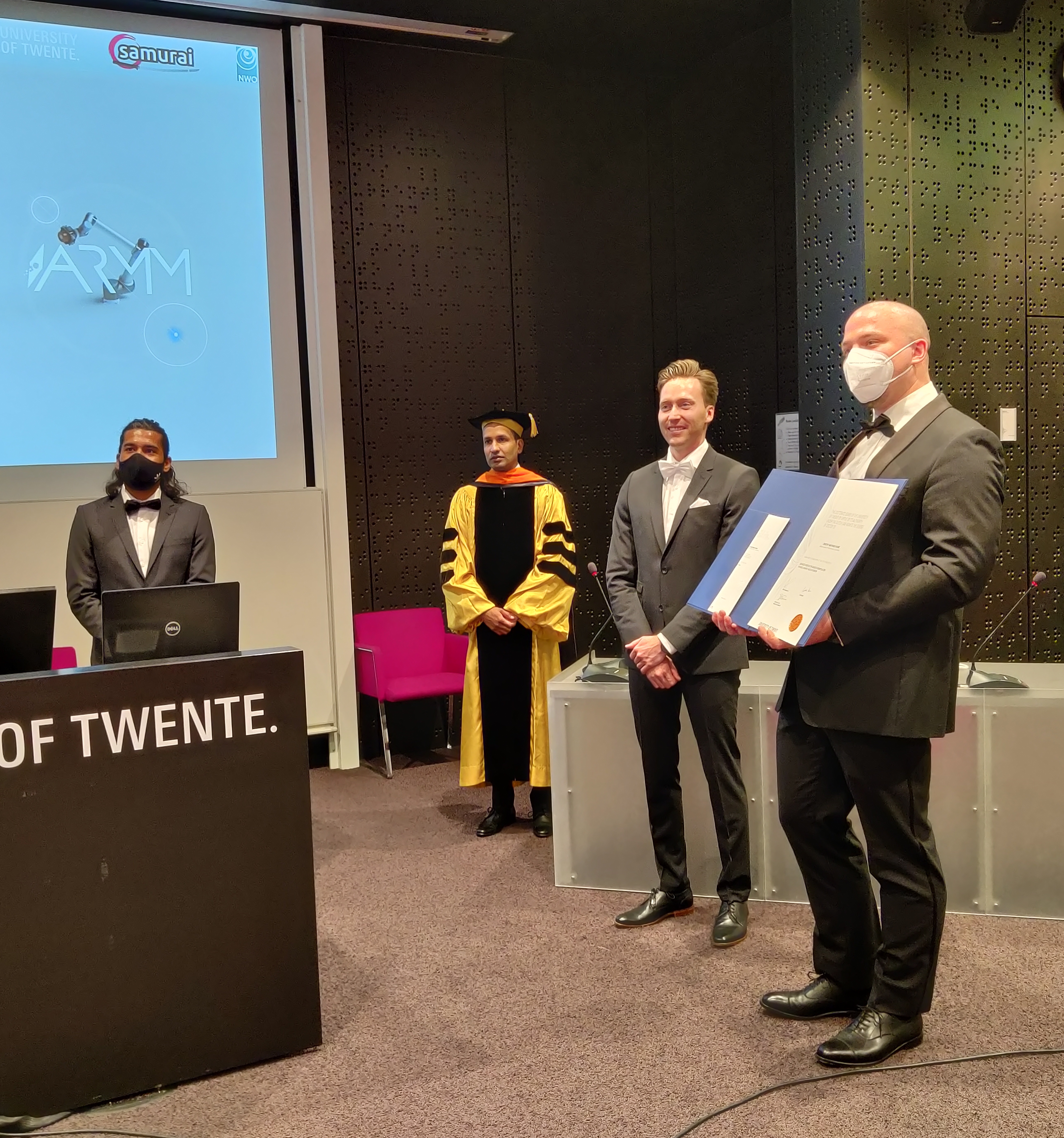 Part II identifies challenges regarding the lack of multi-modal sensing, tracking, and operative planning. Such challenges still impede the robotic systems’ widespread use and require directions for alleviating them. First, the use of fiducial-aided optical tracking within the ARMM system is investigated in Chapter 4. Here, the focus is on the trajectory planning of robots to ensure a safe and collaborative surgical environment. This approach provides insight into what is regarded as a “safe operating environment” – moreover, raising the importance of the clinical feasibility of the ARMM system. Therefore, in Chapter 5, clinical challenges, such as the duration of catheterizations, accurate magnetic catheter tip positioning within vasculature, and consistent imaging of these catheters using non-hazardous modalities, are addressed. Specifically, a robotically-actuated ultrasound transducer is developed as a safe alternative to conventional intra-operative X-ray fluoroscopy.
Part II identifies challenges regarding the lack of multi-modal sensing, tracking, and operative planning. Such challenges still impede the robotic systems’ widespread use and require directions for alleviating them. First, the use of fiducial-aided optical tracking within the ARMM system is investigated in Chapter 4. Here, the focus is on the trajectory planning of robots to ensure a safe and collaborative surgical environment. This approach provides insight into what is regarded as a “safe operating environment” – moreover, raising the importance of the clinical feasibility of the ARMM system. Therefore, in Chapter 5, clinical challenges, such as the duration of catheterizations, accurate magnetic catheter tip positioning within vasculature, and consistent imaging of these catheters using non-hazardous modalities, are addressed. Specifically, a robotically-actuated ultrasound transducer is developed as a safe alternative to conventional intra-operative X-ray fluoroscopy.
In Part III, the research focus shifts more towards the design of novel magnetic endovascular catheters themselves and how such catheters can be integrated with, and actuated within, the ARMM system. First, in Chapter 6, a framework is proposed to estimate contact forces between a fiber Bragg grating (FBG) sensor-embedded catheter and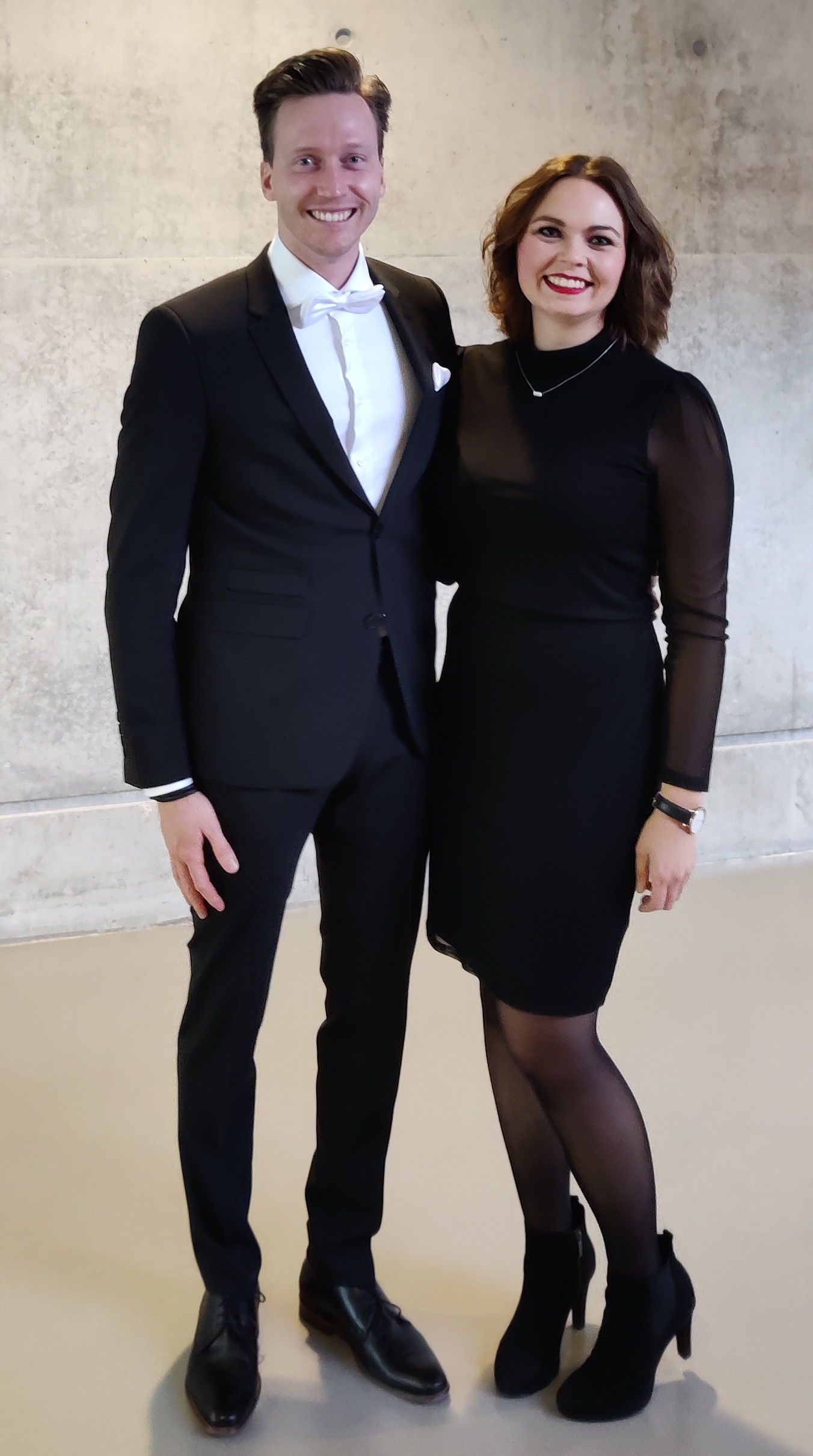 vasculature. The critical factor of imaging the catheter within an ultrasound-specific patient-oriented approach is then addressed in Chapter 7. Finally, in Chapter 8, a catheterization to treat a simulated Peripheral Artery Disease (PAD) is demonstrated. Here, the performance and clinical feasibility of a novel magnetically-actuated catheter are tested inside the ARMM system.
vasculature. The critical factor of imaging the catheter within an ultrasound-specific patient-oriented approach is then addressed in Chapter 7. Finally, in Chapter 8, a catheterization to treat a simulated Peripheral Artery Disease (PAD) is demonstrated. Here, the performance and clinical feasibility of a novel magnetically-actuated catheter are tested inside the ARMM system.

Finally, in Part IV, the range of surgical applications for the ARMM system is discussed, overall conclusions are drawn, and directions for future work are provided. The ARMM system’s key strengths are its large operable workspace, consistent visual tracking, and collaborative control of robots capable of reaching any patient extremity. The proposed electromagnetic coil can magnetically steer a range of endovascular catheters with high positioning accuracies and can provide feedback of catheters in the human body with sub-millimetre precision. Furthermore, the ARMM workstation is separated from radiation, making it a safe alternative to X-ray fluoroscopy. The clinical relevance of the ARMM system is clearly supported by the current findings and the evidence from this dissertation suggests that it can be successfully deployed in future clinical practice. There is significant potential to contribute to improving patient care, benefit the next generation of vascular surgeons, and increase the efficiency of clinicians.
Promotor
- Prof. dr. S. Misra (University of Twente/University Medical Center Groningen, The Netherlands)
Thesis Committee
- Prof. Dr. Ir. H. F. J. M. Koopman (University of Twente, The Netherlands)
- Prof. Dr. Ir. P. Valdastri (University of Leeds, England)
- Dr. D. Dodou (Delft University of Technology, The Netherlands)
- Prof. Dr. J-P.P.M. de Vries (University Medical Center Groningen, The Netherlands)
- Prof. Dr. Ir. B. ten Haken (University of Twente, The Netherlands)
- Dr. V. Kalpathy Venkiteswaran (University of Twente, The Netherlands)
- Prof. Dr. Ir. G.J. Verkerke (University of Twente/University Medical Center Groningen, The Netherlands)

